Steel Warehouse Structures with Advanced Security Features
Discover the advantages of steel warehouse structures with advanced security features. Design, benefits, and key considerations for modern and secure warehouses.
Steel warehouse structures with advanced security features are an innovative solution for companies seeking secure and efficient storage of goods. This article discusses successful design steps, advantages of steel warehouse structures, and key considerations in their planning.
By combining the strength of steel and cutting-edge security technology, these modern warehouses offer optimal protection against theft, fire, and natural disasters. Business owners and logistics managers will gain valuable insights into maximizing their investment in secure and durable storage infrastructure.
1,Steps to Successfully Design Steel Warehouse Structures
Designing steel warehouse structures with advanced security features requires careful planning and proper execution. Here are the key steps to achieve a successful design:
- Needs Analysis: The first step is to identify specific warehouse needs, including storage capacity, types of goods to be stored, and required security level. Also consider local regulations and applicable industry standards.
- Site Selection: Choose a strategic location considering accessibility, environmental security, and potential for future growth. Also evaluate soil conditions and topography to ensure compatibility with the steel structure.
- Structural Design: Involve structural engineers to design a strong and efficient steel framework. Consider wind loads, seismic loads, and internal load capacity to ensure long-term structural integrity.
- Security Feature Integration: Design an integrated security system that includes access control, surveillance cameras, alarms, and fire protection. Ensure these features are seamlessly integrated with the steel structure.
- Layout Optimization: Design an internal layout that maximizes storage efficiency and facilitates goods movement. Consider the use of racks, forklifts, and automated inventory management systems.
- MEP Planning: Design efficient mechanical, electrical, and plumbing systems to support warehouse operations and security features. This includes lighting, ventilation, and sprinkler systems.
- Material Selection: Choose high-quality steel and complementary materials that are fire-resistant and corrosion-resistant. Also consider the use of insulation panels for energy efficiency.
- Construction Planning: Create a realistic construction schedule and choose contractors experienced in steel warehouse construction. Ensure strict supervision during the construction process.
- Testing and Commissioning: Conduct thorough testing of the structure and all security systems before the warehouse begins operations. Ensure all features function according to specifications.
- Training and Documentation: Prepare operation manuals and provide staff training on the use of security features and emergency procedures.
By following these steps, you can ensure that your steel warehouse structure is not only secure and functional but also tailored to your specific business needs.
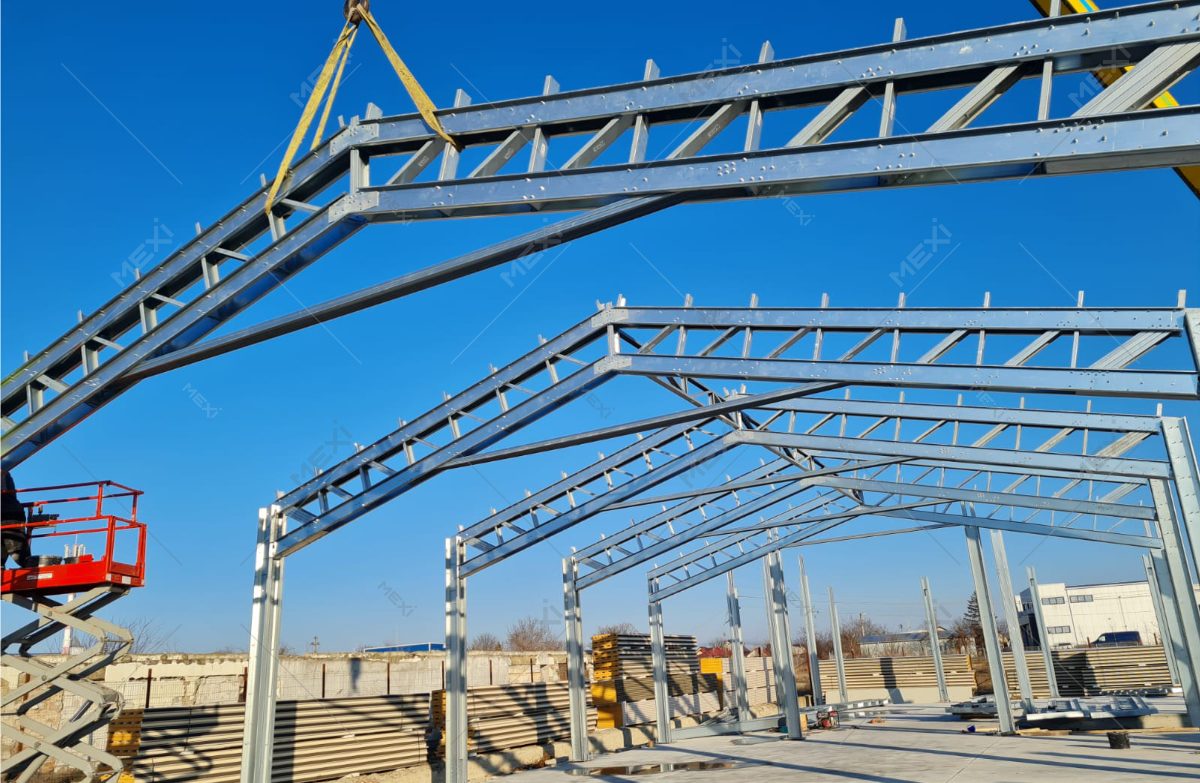
2. Advantages of Steel Warehouse Structures
Steel warehouse structures with advanced security features offer various advantages that make them an ideal choice for various industries. Here are the main benefits of using steel warehouse structures:
- Strength and Durability: Steel is known for its exceptional strength. Steel warehouse structures can withstand heavy loads and resist external pressures such as strong winds or earthquakes. This provides maximum protection for the goods stored inside.
- Design Flexibility: Steel allows for flexible and customizable designs. Steel warehouses can be designed with wide spans without pillars, creating spacious and open storage areas. This facilitates internal layout arrangement and the use of heavy equipment like forklifts.
- Construction Speed: Compared to traditional building materials, steel structures can be assembled quickly. Steel components can be prefabricated off-site, reducing on-site construction time and minimizing disruption to ongoing business operations.
- Cost-Effective: Although initial costs may be higher, steel warehouse structures offer long-term savings. Steel’s durability reduces the need for maintenance and repairs, while its energy efficiency can lower operational costs.
- Environmentally Friendly: Steel is a fully recyclable material. The use of steel in warehouse construction supports sustainable building practices and can help companies achieve their sustainability goals.
- Fire Resistance: With proper coating, steel structures can provide superior fire resistance. This is crucial for protecting valuable goods and reducing fire risks.
- Ease of Expansion: If the business grows, steel warehouse structures can be easily expanded or modified to accommodate evolving needs without significantly disrupting existing operations.
- Technology Integration: Modern steel structures are designed to seamlessly integrate advanced technology. This includes security systems, automation, and inventory management solutions that can improve overall operational efficiency.
- Pest Protection: Unlike wooden structures, steel warehouses are not vulnerable to damage from termites or other pests. This reduces the risk of inventory damage and long-term maintenance costs.
- High Resale Value: Steel warehouse buildings generally have a higher resale value compared to traditional structures due to their durability and flexibility.
- Enhanced Security: Steel structures offer a solid platform for implementing advanced security features. Steel walls and roofs provide strong physical protection, while their design allows for the integration of complex surveillance and access control systems.
- Energy Efficiency: With proper insulation, steel warehouses can be highly energy efficient. This reduces heating and cooling costs, which is important for warehouses storing temperature-sensitive goods.
- Minimal Maintenance: Steel structures require minimal maintenance compared to other building materials. This reduces operational downtime and long-term maintenance costs.
- Lower Insurance: Due to increased durability and security, steel warehouses often qualify for lower insurance premiums, resulting in additional savings for owners.
- Adaptability: Steel warehouse structures can be easily modified to accommodate changes in storage needs or inventory types, providing long-term flexibility for businesses.
- Modern Aesthetics: Modern steel warehouse designs can be visually appealing, enhancing company image and overall property value.
Considering all these advantages, it’s clear that steel warehouse structures with advanced security features offer a superior storage solution for various industries, combining strength, efficiency, and security in one comprehensive package.

3.Navigating Key Design Considerations for Steel Warehouse Structures
Designing steel warehouse structures with advanced security features requires careful consideration of various factors. Here are the key design considerations to navigate:
a) Structural Load Analysis:
- Carefully calculate dead loads (weight of the structure itself) and live loads (inventory, equipment, personnel).
- Consider dynamic loads such as wind, snow (if applicable), and seismic potential.
- Design strong foundations to evenly distribute loads.
b) Structural System Selection:
- Evaluate various steel frame systems such as rigid portals, trusses, or cantilever systems.
- Choose a system that offers an optimal balance between strength, flexibility, and cost efficiency.
c) Internal Layout Design:
- Optimize workflow by planning efficient aisles, storage areas, and loading/unloading zones.
- Provide sufficient space for material handling equipment maneuvering.
- Consider the use of multi-tier racking to maximize vertical space.
d) Security System Integration:
- Design layered access control systems with biometric technology and smart cards.
- Plan strategic placement of CCTV cameras and motion sensors.
- Integrate alarm systems directly connected to security centers or authorities.
e) Fire Protection:
- Design automatic sprinkler systems covering the entire warehouse area.
- Include sensitive smoke and heat detectors.
- Plan evacuation routes and easy access for firefighters.
f) Lighting and Ventilation:
- Maximize natural lighting with skylights or transparent panels.
- Design energy-efficient LED lighting systems with automatic controls.
- Integrate adequate ventilation systems to maintain air quality and temperature.
g) Energy Efficiency:
- Use high-performance insulation materials for roofs and walls.
- Consider the use of solar panels on the roof to generate clean energy.
- Design efficient HVAC systems for temperature and humidity control.
h) Access and Circulation:
- Design doors and loading docks large enough to accommodate large vehicles.
- Provide adequate parking and maneuvering areas for trucks and equipment.
- Ensure easy access for emergency vehicles.
i) Future Expansion:
- Design structures with the possibility of horizontal or vertical expansion in the future.
- Provide connections and utilities that can be easily expanded.
j) Regulatory Compliance:
- Ensure the design meets all local and national building codes.
- Consider specific industry standards that may apply (e.g., for hazardous material storage).
k) Technology Integration:
- Design robust network infrastructure to support digital inventory management systems.
- Consider the use of IoT technology for real-time warehouse condition monitoring.
l) Weather Resistance:
- Choose exterior materials resistant to local weather conditions.
- Design effective drainage systems to prevent water pooling.
m) Worker Ergonomics and Safety:
- Include safety features such as guardrails, clearly marked pedestrian paths, and adequate lighting.
- Design ergonomic work areas to reduce injury risks.
n) Acoustics:
- Consider sound dampening to reduce noise, especially if the warehouse is located near residential areas.
o) Aesthetics:
- Design an attractive facade that enhances the company’s image.
- Consider landscaping around the warehouse to improve visual appeal.
p) Water Management:
- Design rainwater collection systems for non-potable use.
- Implement flood prevention measures if necessary.
q) Use Flexibility:
- Design spaces that can be modified to accommodate changes in storage needs or inventory types.
r) Disaster Resilience:
- Consider additional design features for areas prone to natural disasters such as hurricanes or earthquakes.
s) Maintenance:
- Design features that facilitate routine maintenance, such as easy access to MEP systems.
t) Sustainability:
- Integrate sustainable design practices to reduce the warehouse’s carbon footprint.
- Consider green building certifications such as LEED or BREEAM.
By comprehensively considering all these aspects, designers can create steel warehouse structures that are not only secure and functional but also efficient, sustainable, and ready to face future challenges. The balance between security, operational efficiency, and flexibility is key in designing modern warehouses that meet the needs of evolving businesses.
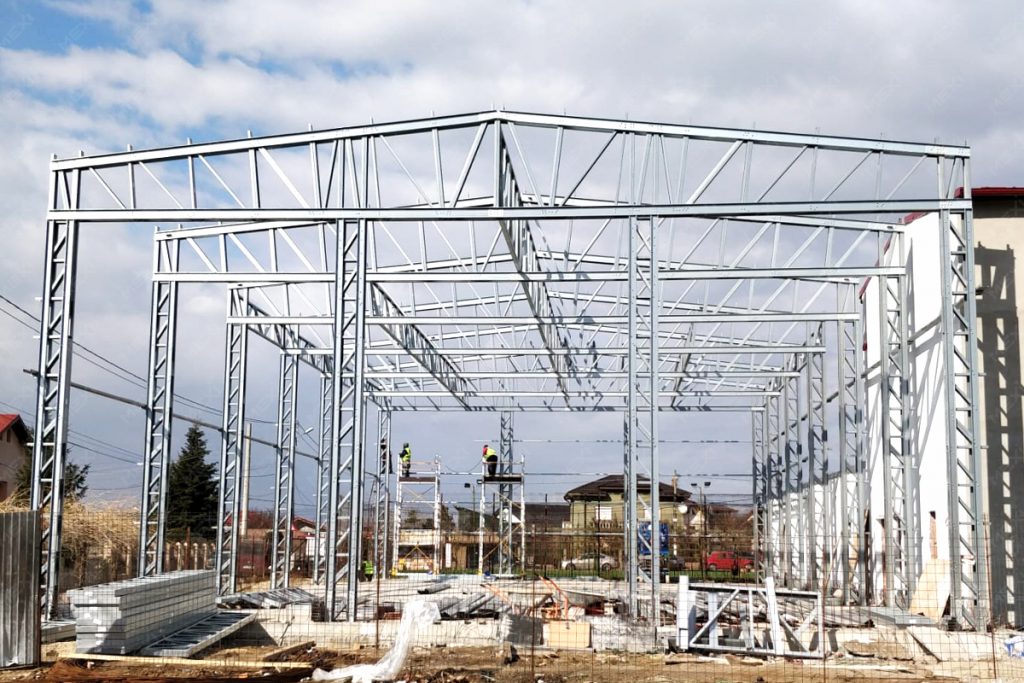
4. Conclusion
Steel warehouse structures with advanced security features represent a strategic investment for companies seeking secure, efficient, and durable storage solutions. Through the discussion of design steps, advantages, and key considerations, we can conclude several key points:
- Comprehensive Planning: The success of a steel warehouse project starts with careful planning, involving needs analysis, strategic site selection, and integration of advanced security features from the early design stages.
- Material Excellence: Steel offers a unique combination of strength, design flexibility, and construction efficiency. These advantages allow for the creation of structures that are not only durable but also adaptive to changing business needs.
- Integrated Security: Advanced security features are not just add-ons but an integral part of modern warehouse design. Integration of surveillance systems, access control, and fire protection creates a secure and controlled storage environment.
- Operational Efficiency: Careful design allows for workflow optimization, effective space utilization, and technology integration to enhance productivity and reduce long-term operational costs.
- Sustainability: The use of steel and sustainable design practices supports companies’ environmental goals, reduces carbon footprint, and potentially results in significant energy savings.
- Adaptability: The ability of steel warehouse structures to adapt to changing business needs makes them a valuable long-term investment, allowing for growth and evolution of operations without the need for major reconstruction.
- Economic Value: Although initial costs may be higher, the long-term benefits in terms of durability, energy efficiency, and flexibility make steel warehouses an economical choice in the long-term perspective.
In an era where data and physical security are becoming increasingly critical, while operational efficiency remains a top priority, steel warehouse structures with advanced security features offer a comprehensive solution. Companies investing in this infrastructure are not only protecting their assets but also positioning themselves for future growth and success.
As technology and industry practices continue to evolve, it’s important for designers and business owners to stay up-to-date with the latest innovations in steel warehouse design and security systems. A proactive approach in adopting new technologies and improved construction methods will ensure that investments in steel warehouse structures continue to provide optimal value for companies in the years to come.
Finally, the successful implementation of steel warehouse structures with advanced security features depends on close collaboration between business owners, architects, engineers, and contractors. With a clear understanding of project objectives, unique challenges, and long-term vision, the team can create storage solutions that not only meet current needs but are also ready to face future challenges.
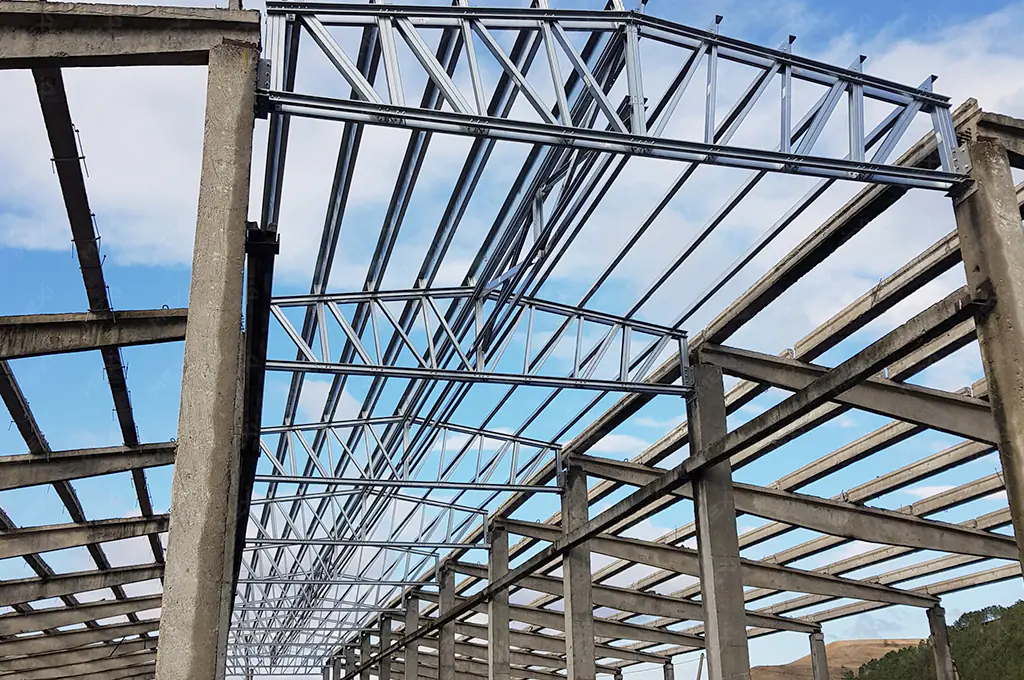
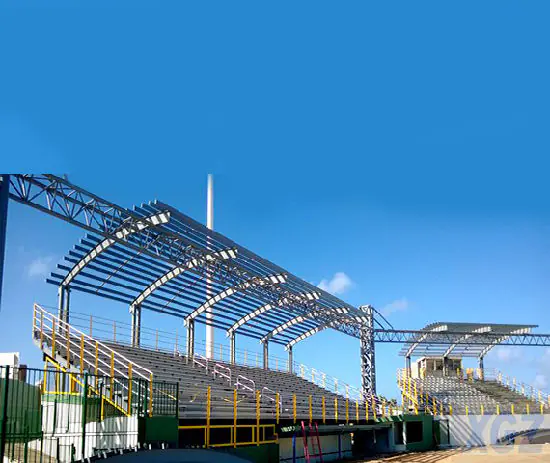
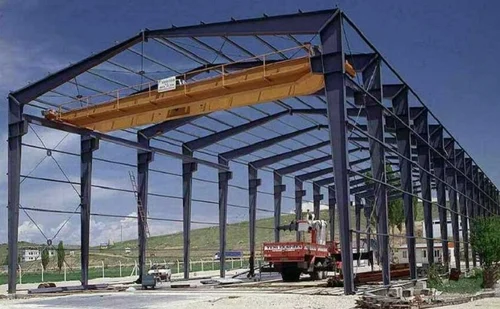
Post Comment